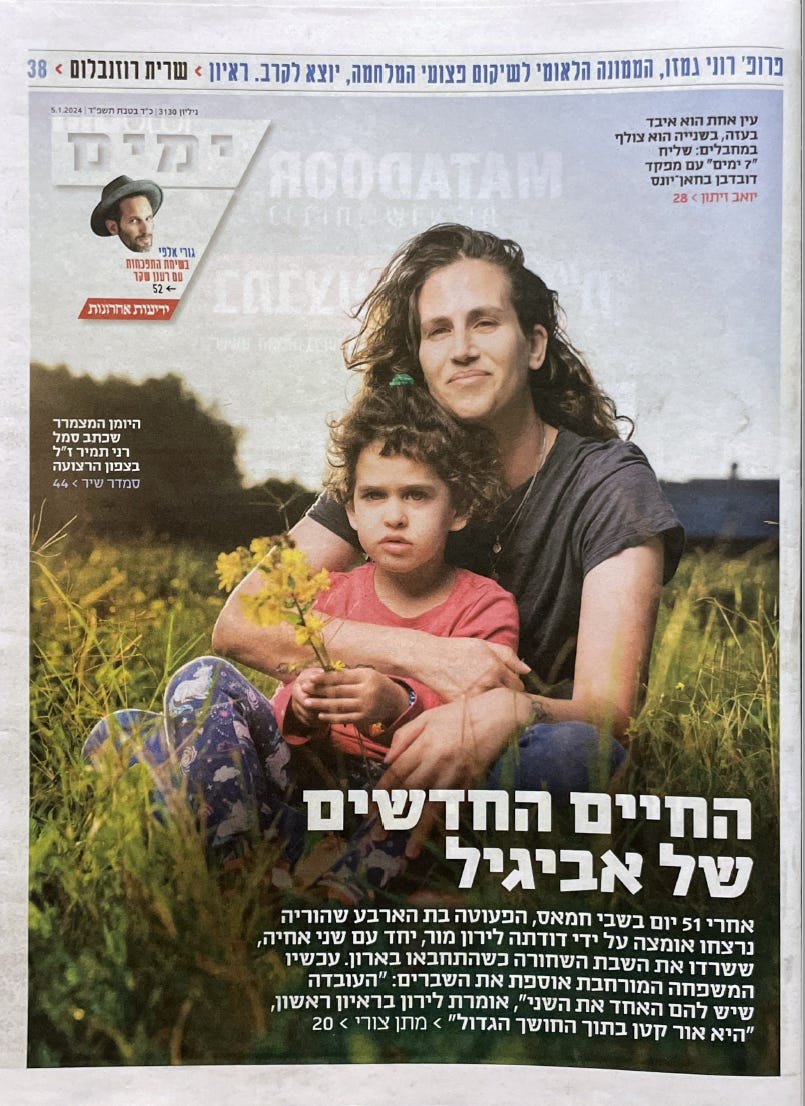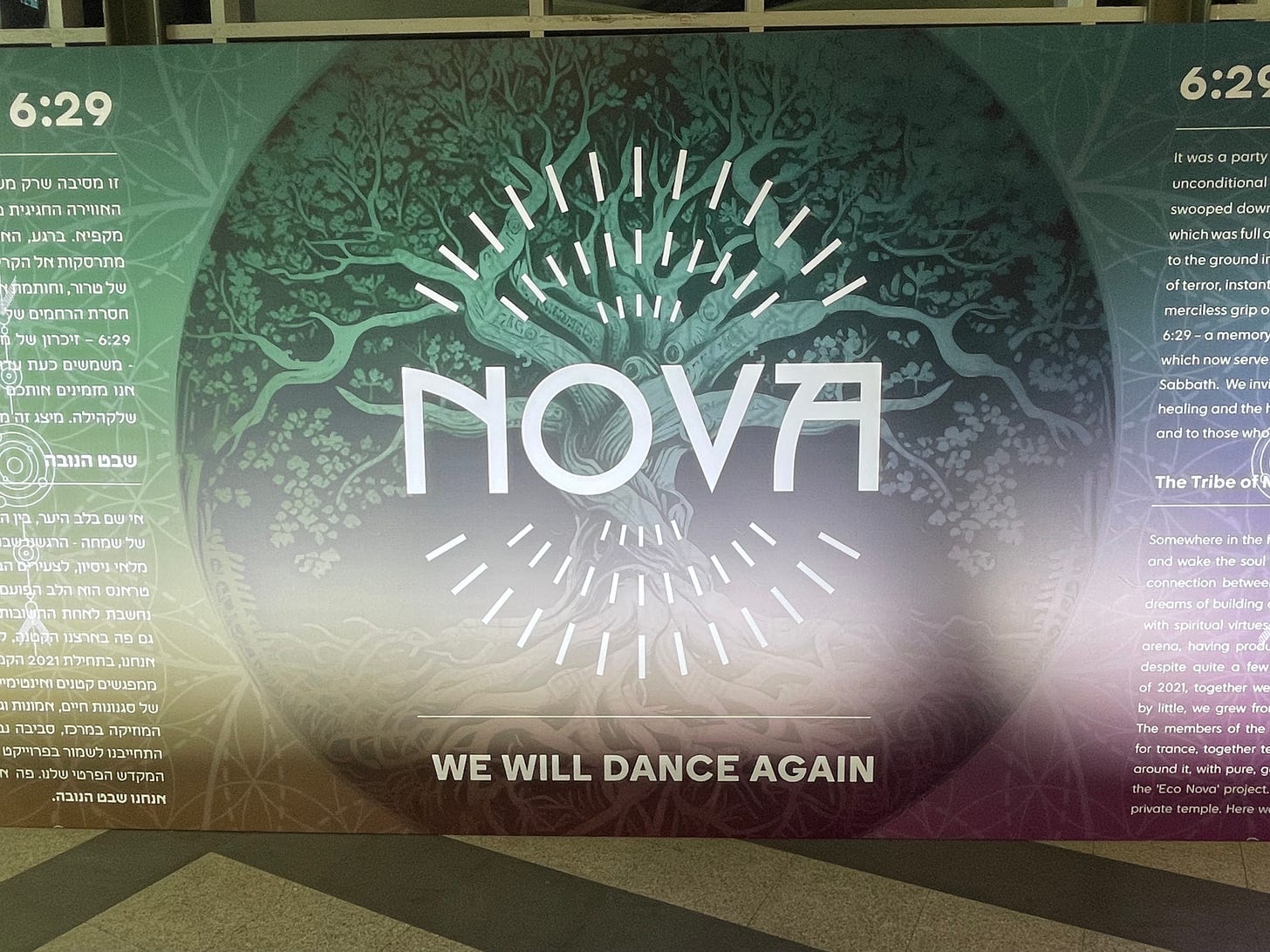06:29
The Tel Aviv Expo Center recently hosted a "recreation" of parts of the Nova Festival, which of course ended in tragedy. Today, we're sharing a few images of that powerful exhibition.
The Tel Aviv Expo Center
recently hosted a “recreation” of the Nova Festival that ended so tragically on October 7, a recreation that also became a memorial. I went to see it in the last days before it closed, and below, share some of the images of a very powerful morning.
I will let the images speak for themselves, and keep the words to a minimum.
But first, as we track the national mood …
another magazine cover from this weekend’s newspapers, which, like the Nova Expo below, is a combination of grief and hope.
We posted a few other examples of these covers on Sunday. This one is from Yediot Ahronot.
The large white headline reads:
Avigayil’s new life.
While the smaller, longer headline reads:
After 51 days in Hamas captivity, the four year old girl whose parents were murdered, has been adopted by her aunt, Liron Mor, along with her two brothers, who survived the Black Sabbath by hiding in a closet. Now, the newly-expanded family is trying to put pieces back together. “The fact that they have one another,” says Liron in this first interview, “is a bit of light in the massive darkness.”
One of the central installations in the exhibition was a gigantic screen on which the faces of many of the 400 people slaughtered were pictured. That it takes so long for all the young, life-filled faces to appear was a powerful way of shocking us, once again, with the sheer magnitude of the horror and loss.
The young people at the rave fled without a moment’s notice, leaving behind all manner of clothing. The exhibition put the clothing, the shoes, the sunglasses and the car keys out, both so families could collect anything they recognized, and so that …
… if the display reminds you of Holocaust memorials, I assume that’s not accidental.
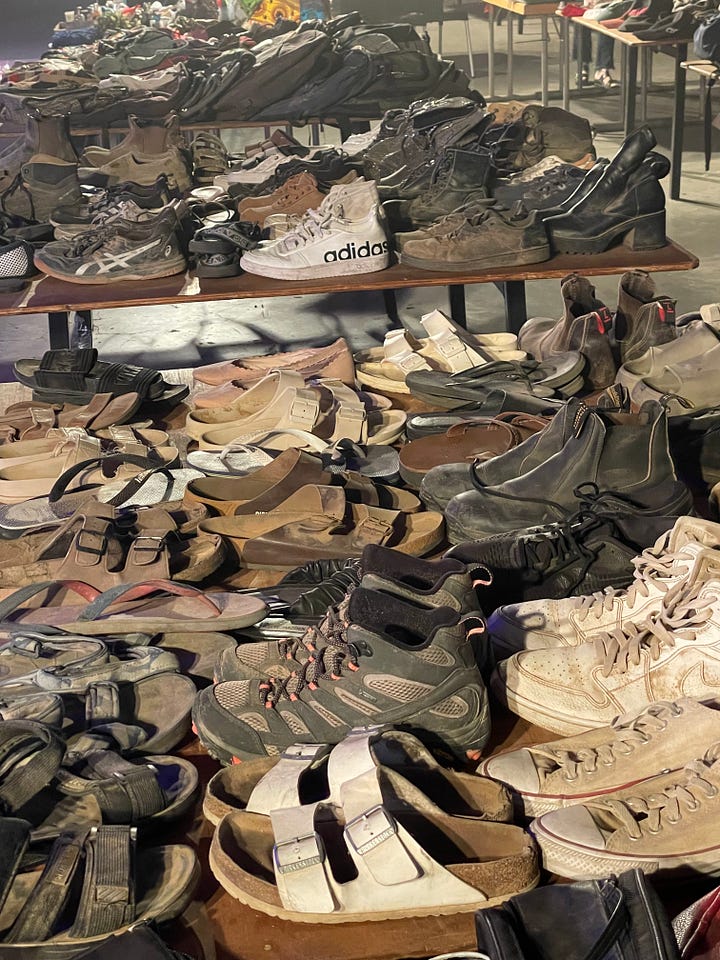
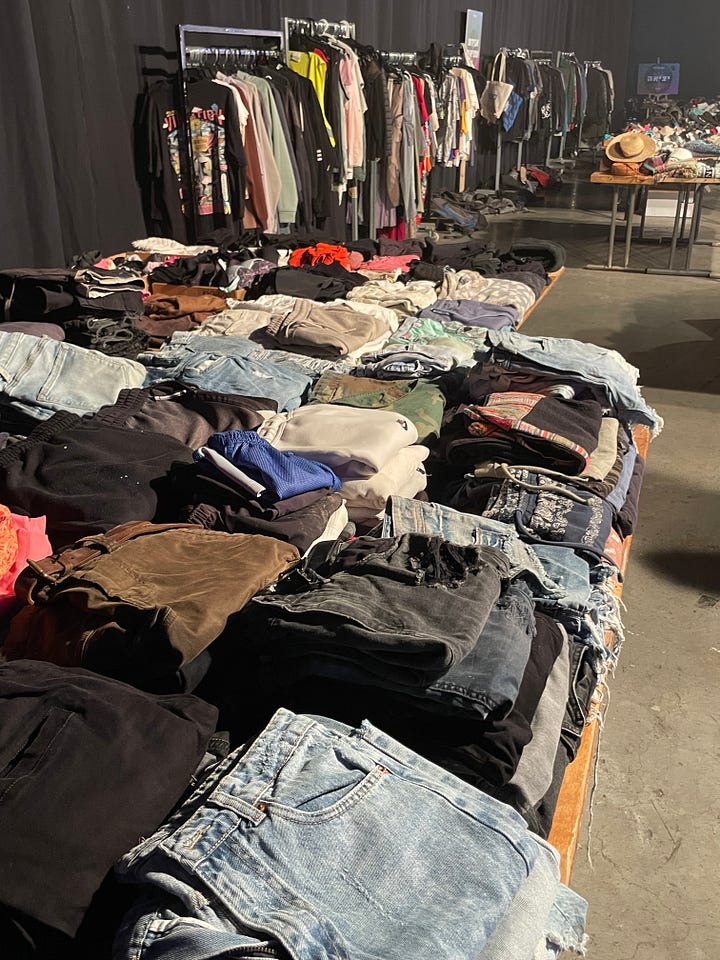
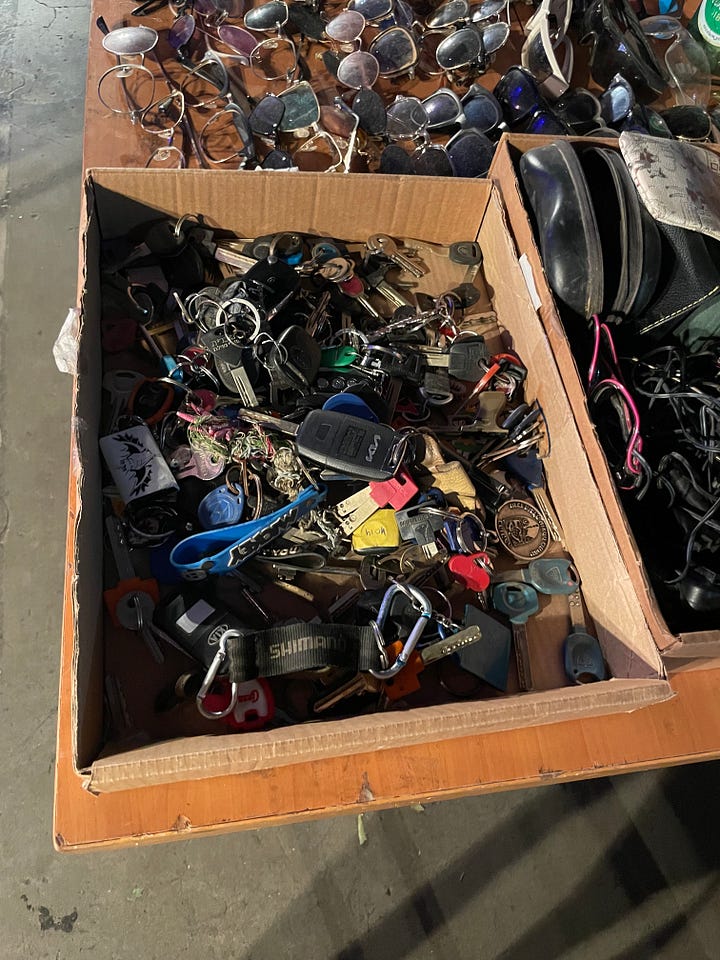
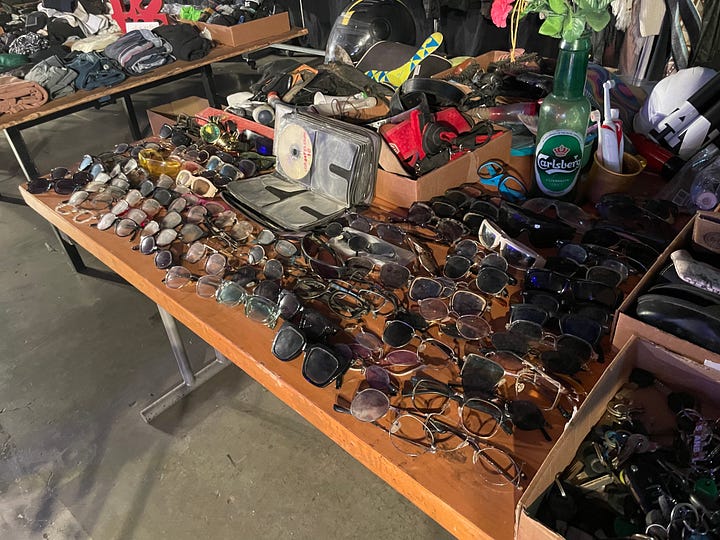
There were, as you have no doubt seen in countless photos and videos, hundreds of cars that were destroyed and entirely burnt—sometimes with people in them. Several of the cars were at the expo, but to give it a sense of the rave, a video was played onto the cars. Note also the notes to friends and loved ones that people have posted everywhere.
The expo also sought to recreate some of the festival feel. The signs are real. Top left: “camping area.” Bottom right: recycling receptacles, with instructions for what goes where. Top right: a participant’s tent and equipment. Bottom left: Coke fridges.
If the Coke fridges look familiar to you, it may be because we posted a video of a soldier arriving at the scene of the slaughter. He called out, asking anyone for a sign of life, but there was no one left alive. In part of the brief video, he looks behind these very fridges and discovers even more bodies. (We posted that video here — you need to scroll down about 3/4 of the way.)
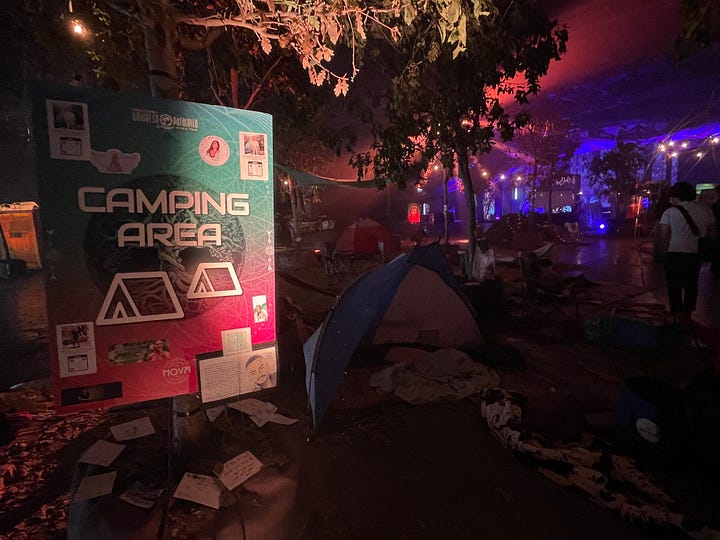
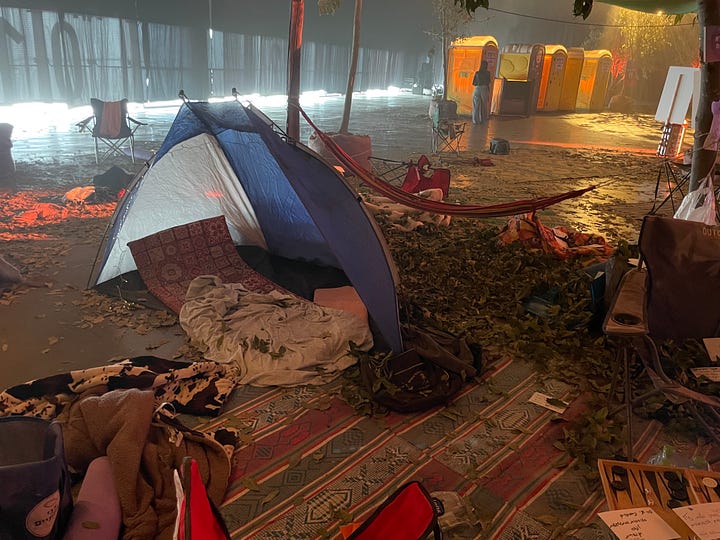
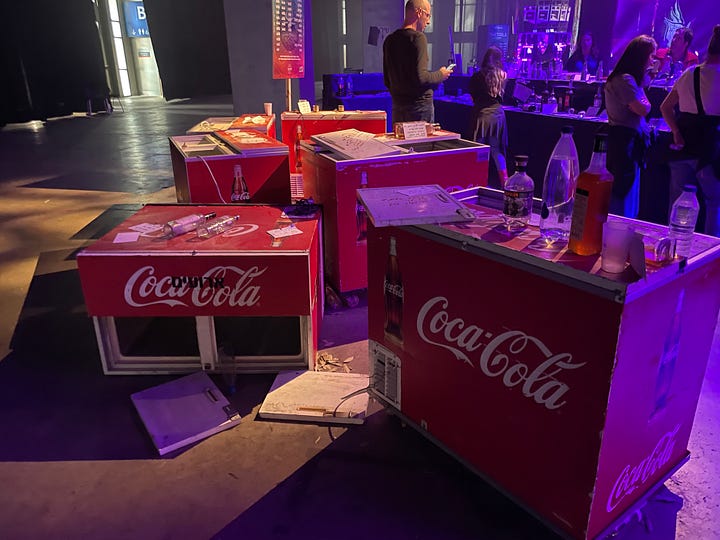
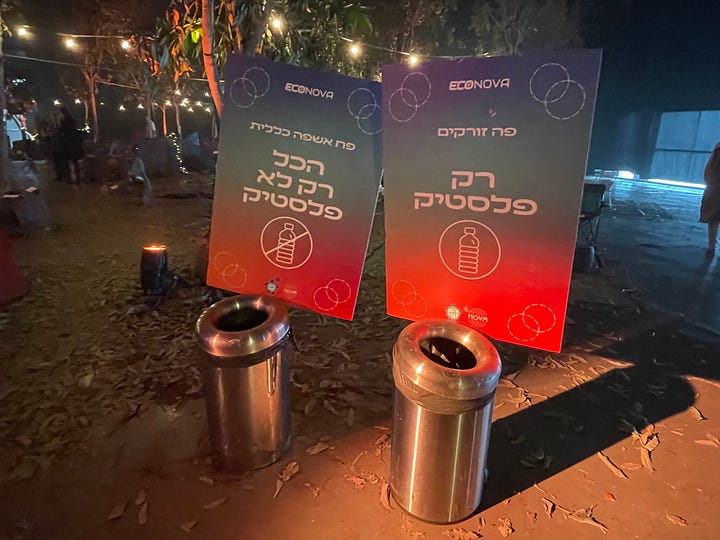
The expo was filled with notes that people had written to those killed. Zoom in on almost anything, like the cars above, and there are notes. Heartbroken and heartbreaking loss.
Bottom left, is but one example, the note in the bottom right corner of the photo. “Bentzik, in your memory. Our love, you’re always in our hearts. Keep being happy up there. May God avenge your blood.”
The woman in the bottom right photo is Libby Cohen Meguri z’’l, who was 22 when she was killed. She was the stepdaughter of Dr. Yariv Yogev, the director of the Obstetrics and Gynecology Department at Ichilov hospital in Tel Aviv. Throughout the war, he has continued to deliver babies at the Lis maternity ward—bringing new life into the world, even as he mourns the life stolen from his family.
Below, we’re including a video of him recalling his later phone call with Libby on October 7 when she called him to tell him she’d been shot.
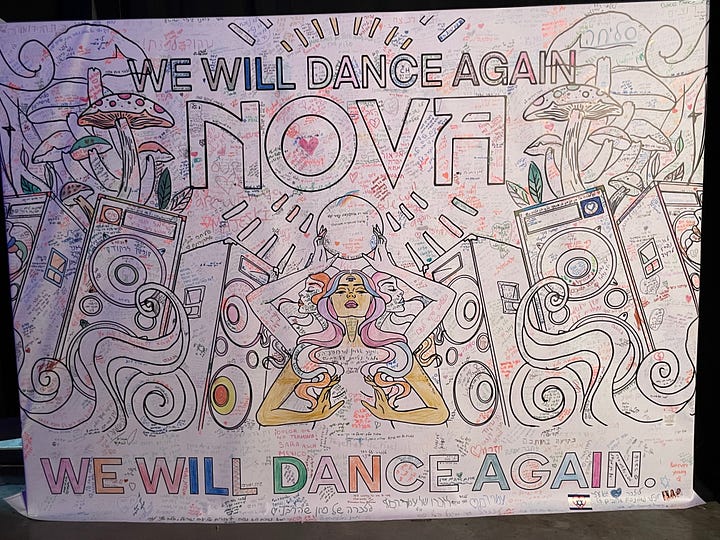
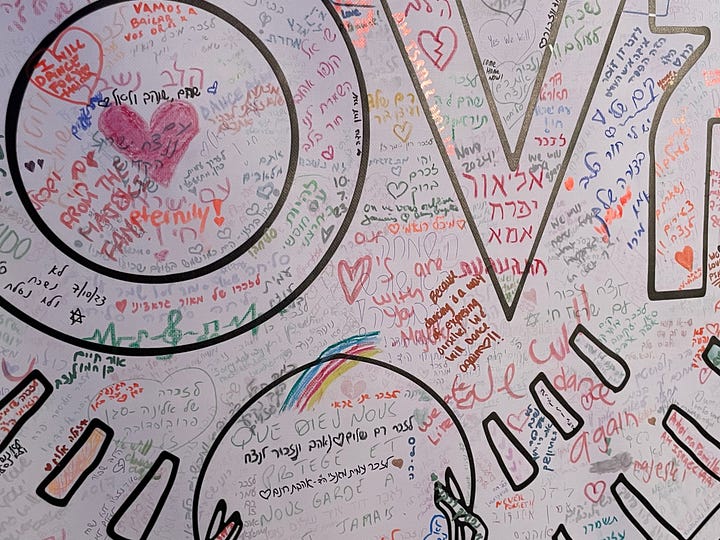

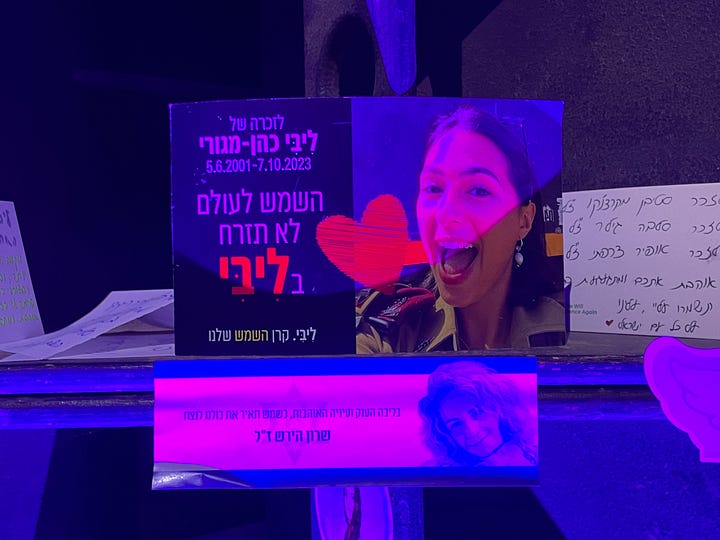
A video that seeks to replicate the rave-like ambience.
And finally, a sign that has both 6:29, the minute that the horror started, and the promise “We Will Dance Again.”



